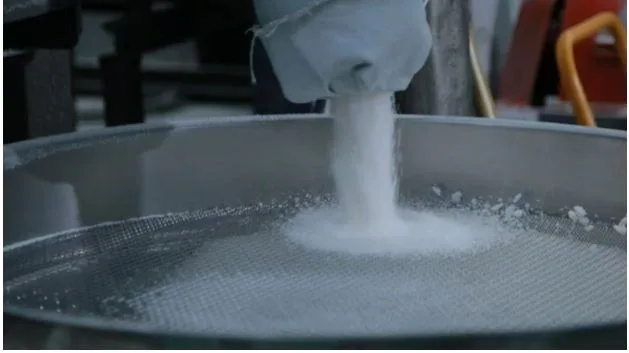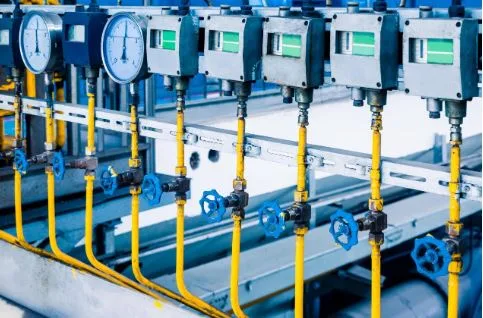Unlocking the Potential of Anionic Polyacrylamide in Modern Industries
In the ever-evolving landscape of industrial chemistry, certain compounds stand out for their versatility and efficiency. Among these, anionic polyacrylamide (APAM) has garnered significant attention for its wide range of applications, particularly in water treatment, agriculture, and mining. This remarkable polymer is celebrated not only for its effectiveness but also for its eco-friendly properties when used appropriately. Let’s delve deeper into the science, applications, and benefits of this innovative material.
What is Anionic Polyacrylamide?
Anionic polyacrylamide is a high-molecular-weight polymer composed of acrylamide units with a negatively charged (anionic) group attached. This negative charge allows the polymer to interact effectively with positively charged particles in solutions, making it an excellent flocculant and coagulant aid. Its molecular structure can be tailored during synthesis to suit specific industrial requirements, ensuring versatility in performance.
The unique feature of APAM is its ability to form long-chain networks, which bind fine particles together, leading to sedimentation and clearer water in treatment processes. Its chemical stability and non-toxic nature make it an attractive choice for both industrial and environmental applications.
Applications of Anionic Polyacrylamide in Water Treatment
Water treatment is one of the most prominent applications of anionic polyacrylamide. It acts as a flocculant, effectively removing suspended solids, colloids, and other impurities from water. The polymer’s long chains capture small particles and aggregate them into larger flocs, which then settle at the bottom or can be easily filtered out.
Municipal wastewater treatment plants utilize APAM to improve sludge dewatering, reduce chemical consumption, and increase overall treatment efficiency. Industrial sectors, such as paper manufacturing and textile processing, rely on APAM to clarify process water and minimize environmental pollution. Its effectiveness ensures that water meets stringent regulatory standards before being discharged or reused.
Role in Mining and Mineral Processing
The mining industry also benefits significantly from anionic polyacrylamide. In mineral processing, APAM helps separate valuable minerals from waste materials. By acting as a flocculant, it aggregates fine particles, allowing for easier sedimentation and filtration. This enhances the recovery of precious metals and reduces water consumption during operations.
Additionally, APAM is used in tailings management. Mining operations often produce large volumes of slurry, which can be challenging to handle and store. Anionic polyacrylamide improves the solid-liquid separation process, reducing the volume of water in tailings and promoting safer disposal or reuse of slurry.
Agricultural Uses of Anionic Polyacrylamide
Beyond industrial applications, APAM plays a significant role in agriculture. Soil erosion and nutrient loss are persistent challenges for farmers worldwide. By incorporating anionic polyacrylamide into irrigation and soil management practices, water retention is improved, and soil structure is stabilized.
APAM works by binding soil particles together, reducing erosion caused by wind and water runoff. It also enhances water infiltration, ensuring that crops receive adequate moisture and nutrients. Farmers have reported increased crop yields and reduced fertilizer runoff, demonstrating the polymer’s sustainable advantages in agriculture.
Environmental and Safety Considerations
While anionic polyacrylamide offers numerous benefits, it is essential to handle it responsibly. The polymer itself is non-toxic, but residual acrylamide monomers can pose health risks if present in high concentrations. Therefore, sourcing high-purity APAM and following recommended usage guidelines is critical.
Environmental impact is another consideration. When used correctly, APAM helps reduce chemical consumption and improves wastewater treatment efficiency, leading to less pollution. Many industries have adopted APAM as part of their green initiatives, aiming to enhance sustainability while maintaining productivity.
Choosing the Right Type of APAM
APAM is available in various grades and molecular weights, which influence its performance. Low-molecular-weight polymers act faster and are suitable for rapid flocculation, while high-molecular-weight polymers provide stronger flocs for more efficient sedimentation. The choice depends on the specific application, water characteristics, and desired outcomes.
Suppliers often provide technical guidance to help industries select the appropriate type and dosage of APAM. Optimizing usage not only improves efficiency but also reduces costs and minimizes environmental impact.
Future Prospects of Anionic Polyacrylamide
The demand for anionic polyacrylamide continues to grow as industries prioritize sustainability and efficiency. Research is ongoing to develop enhanced formulations that are more environmentally friendly and capable of performing under extreme conditions. Innovations include biodegradable variants, advanced polymer blends, and customized solutions for challenging industrial processes.
As regulatory standards tighten and water scarcity becomes a global concern, the role of APAM is set to expand further. Its ability to improve water quality, enhance agricultural productivity, and optimize industrial processes positions it as a vital tool for sustainable development.
Conclusion
Anionic polyacrylamide is much more than a chemical additive; it is a multifunctional polymer that addresses some of today’s most pressing industrial and environmental challenges. From water treatment and mining to agriculture, its applications are diverse, efficient, and sustainable. By understanding its properties, applications, and best practices, industries can harness the full potential of APAM while promoting eco-friendly solutions.
Whether you are in wastewater management, mineral processing, or agricultural innovation, incorporating anionic polyacrylamide into your processes offers tangible benefits, cost savings, and environmental stewardship. The polymer’s versatility and performance make it an indispensable material for modern industry.




